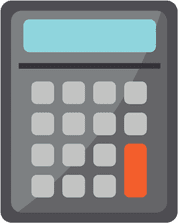When should investors expect to be paid during their multifamily investments?
Make sure you download ALL my resources for FREE at this link: https://themichaelblank.com/vault
There are three times when an investor should expect to get paid during their investment in a syndication.
First, the cash flow.
You're going get cash flow every quarter from your syndicator, or maybe even every month, depending on how smooth the deal is.
Second is a refinancing event.
Maybe two or three years after you buy it, the syndicator has completed their business plan, and gotten the property to be worth more. They refinance extra cash out and send that back to their investors.
Third is the sale.
At the end of the four or five or six year period, the syndicator has completed their plan. It's time to sell the asset and return money to their investors. That's the third time that an investor gets paid on a deal.
What are the main differences between these types of payouts?
Cash flow is a return on capital. For instance, if you have a $100,000 investment, your cash flow is the money that comes out of the operations of the asset. That's a return on capital for your investors.
If you have a refinance, let's say you put $100,000 in and then you get a $60,000 check out later, you've taken your capital balance down to $40,000. You’ve basically lowered your investment in the asset.
Short sale is when you get cashed out of all your funds. The way we calculate them is a little bit different. Even though every dollar is the same dollar to you as an investor.
How do all these different payouts factor into the overall return if someone is looking to kind of holistically look at the type of return they're getting from their investment?
For your for your overall return, you want to look at all three of these things. They're all different components of your investment.
The best metric to be looking at is your internal rate of return, we will call your IRR. That basically takes all your different cash flow streams or distributions, your refinances and your sales, and shows how much they are worth.
In comparison to time, the formula is a little bit complicated, but basically your IRR is going take all of those things and know what what time they were given to you, and give you a number. This is what it means when you hear people say, I got a 12% return or I got an 18% return.
They're really talking about IRR in those calculations.
Remember, the quicker you get your money back, the more valuable it is because $1 that you get today is worth more than $1 that you get in 10 years.
